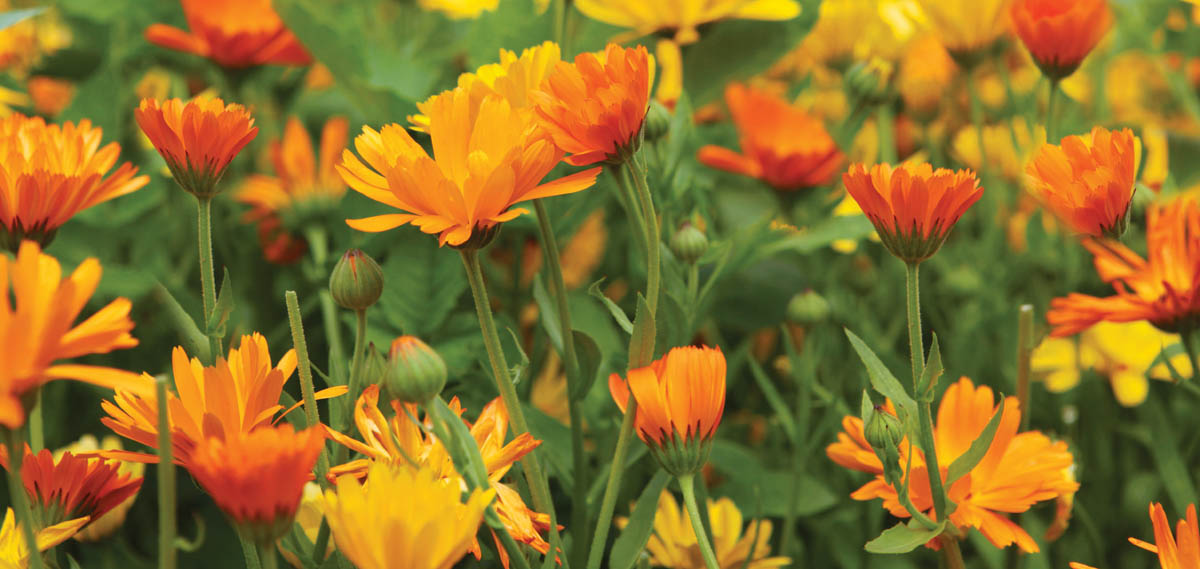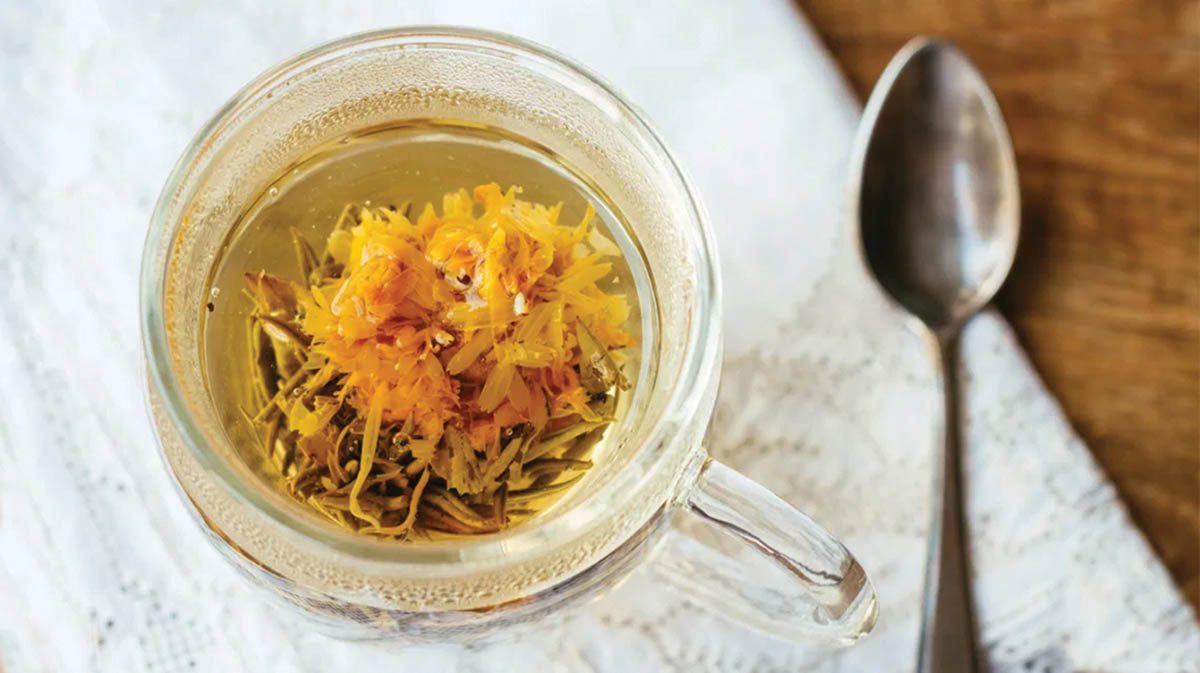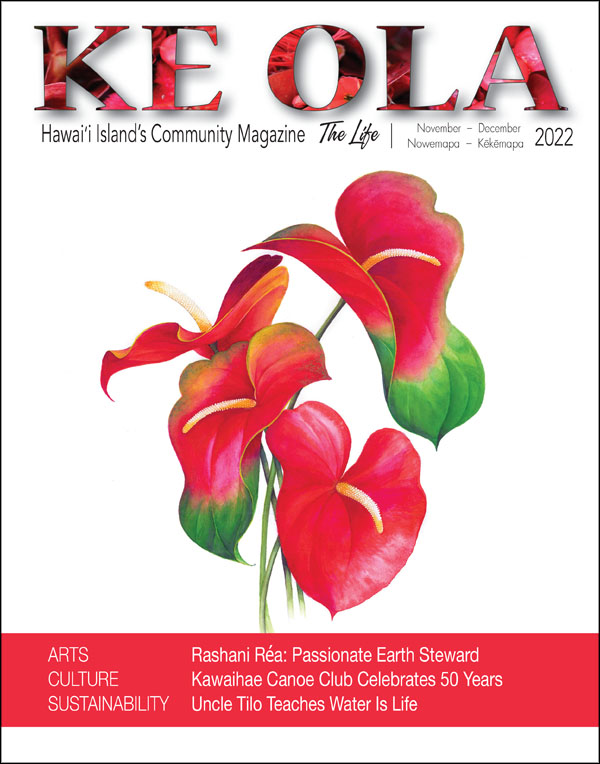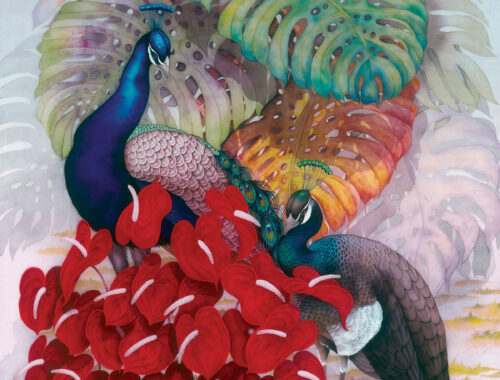
Medicinal Plants from the Garden – Calendula: An Herb for Wise Women

By Brittany P. Anderson
The midwife holds a clear bag of dried herbs over a large box. The box is filled with supplies in preparation for the impending birth. She explains each item contained within the homebirth kit to the expectant mother.
“Here is this wonderfully soothing calendula herb mix for you. You’ll want to add a little to the bath and soak in it daily for a few days after the baby comes,” the midwife says as she places it into the box.
Calendula is a member of the Asteraceae family. This bright and beautiful bunch is commonly known as the daisy or marigold family. The cheerful look of the calendula flower is unassuming, yet it possesses powerful wound healing abilities.
As with so many ancient remedies, the once common knowledge of using plants that grow around the home is all but lost in this modern world.
Calendula has been used after childbirth since the Dark Ages for its anti-inflammatory and therapeutic capabilities when applied to the skin. Midwives and herbalism have a history intrinsically linked together. The term for midwife in medieval French was sage femme, which directly translates to “wise woman.” The wise woman knew how and when to pick herbs and put them to medicinal use.
Today we use the word midwife, derived from old Anglo-Saxon midwif, which meant “with woman.” Social mores at the time dictated that men were not allowed to participate in any woman’s health issues. This left the village female herbalist to be with the woman during childbirth. Creating herbal tonics and tinctures centered around pregnancy, childbirth, and postpartum caused many midwives to be accused of witchcraft.
Prior to the 15th century, midwives learned their craft through oral tradition within their village. Then, formal medical training was established, and women were barred from these early institutions.
Being blocked from the medical industry, women leaned on their knowledge of natural remedies advancing midwifery and solidifying it as a female-dominated field.
The medicinal benefit of herbs is frequently observed, yet seldom scientifically studied. You should always ask your healthcare provider before using any kind of natural remedy, even one that comes from plants.
In a published study from The Journal of Family Medicine and Primary Care, 72 women found their Cesarean-section wounds healed faster with calendula ointment when compared to women getting the standard hospital treatment. They also reported the calendula ointment reduced redness and swelling in the area.
It is the petals of the flower that are rich in flavonoids—a compound with anti-inflammatory capabilities. There has been a renewed interest in calendula by the cosmetic industry utilizing it in everything from diaper rash creams to anti-aging facial toners. Gels and lotions made from calendula can boost collagen production, decrease inflammation, and improve skin hydration.

Growing calendula for the home garden is easy in most climates on Hawai‘i Island. The plant is a perennial, meaning it lives for more than two years. However, calendula is an annual in extremely cold or overly hot locations. Calendula can grow in most soil types in full sun and does well in containers making it a versatile medicinal plant for Hawai‘i Island gardeners.
Calendula is an excellent companion plant in the garden as its flowers attract pollinators and beneficial insects. The medicinal portion of the plant is the flower, usually picked in full bloom and then dried in indirect sunlight.
There are quite a few different cultivars of calendula with variations in flower color. You can find pale yellow to double-headed flower heads in light peach. There’s even a variety with variegated leaves. Because the attractive flowers retain their beauty when dried, calendula is often used in potpourri mixes.
Whether used for medicinal purposes or to add a splash of color to potpourri, the calendula plant is beneficial to all Hawai‘i Island home gardens.
A baby rocks in its bassinet fast asleep after a hard and long journey. The new mother swirls her toes into a brew of herbs steeping in the clawfoot bathtub. She descends into the calendula-infused water to soothe her skin and heal her body as has been the way of wise women for centuries. ❖



